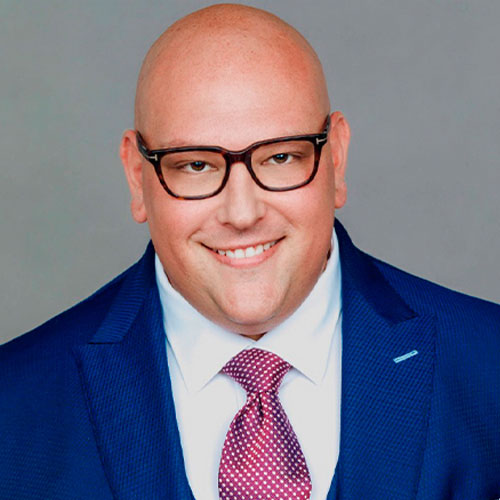
Any untimely death is sad and tragic, and what happened to Naya Rivera, best known for her role as Santana on the hit show Glee, is no exception. Rivera was boating with her 4-year-old son, Josey, on Lake Piru in California in July of 2020. Her body was later recovered from the lake when it was discovered that she had drowned.
Rivera’s former husband sued Ventura County on Josey’s behalf for Rivera’s wrongful death. He claimed that Ventura County, its parks and recreation management agency and the United Water Conservation District neglected to warn visitors of the dangers in the lake or provide appropriate safety equipment. He also made a claim for the infliction of emotional distress on the child for being present and witnessing his mother’s death.
The parties have agreed to enter into a settlement to compensate Josey for his mother’s death.
What happened to Naya Rivera?
Investigators said that Rivera’s body drifted to the surface after likely being trapped in thick vegetation underwater for several days. She had rented a pontoon boat for a ride with Josey, and the lawsuit alleged that the boat lacked an accessible ladder, radio, rope, anchor, life preserver or other flotation or life saving devices that are standard on this type of boat.
The lawsuit also claims that there were no signs that warned of a strong current, low visibility or high winds. At least 26 people have drowned on the lake since it opened in 1959.
Rivera and Josey were swimming when the current and wind began to carry the boat away from them. The wind was reported to be up to 21 miles per hour that afternoon. The initial report said that Rivera had boosted her son back into the boat, but later reports said that Josey managed to climb aboard himself. He heard his mother cry for help before she disappeared into the water.
Wrongful death lawsuits
A wrongful death lawsuit is how the family of a deceased person can recover damages for negligence that caused their passing.
As with any personal injury lawsuit, the plaintiff needs to prove that the defendant was negligent and that the negligence caused the person’s death.
There are 2 types of wrongful death lawsuits:
- Wrongful death. A claim made by the surviving family members for their own losses (loss of the deceased person’s income, medical costs (if there were any), pain and suffering, loss of consortium and companionship, funeral and burial costs, etc.).
- Survival action. A claim made for damages incurred by the deceased person between the time of the accident and the time of death.
It’s unlikely that there would be a survival action in a case like Rivera’s because it would be difficult to establish exactly when the negligence occurred in relation to the time she died.
Negligence and a wrongful death lawsuit
Every personal injury lawsuit—which includes wrongful deaths—is based on whether the defendant was negligent in causing harm or death to the plaintiff.
There are 5 basic factors that would determine whether the plaintiff has a claim for a personal injury or wrongful death:
Did the defendant have a duty of care to the plaintiff?
Often, this is the simplest criterion to satisfy because a duty can exist even between individuals who’ve never met. For example, a driver has a duty of care to every road user—including other drivers, pedestrians, bicyclists and anyone else who is legally permitted to be there. The driver must use reasonable care to avoid any action (or inaction) that could cause injury to someone else.
In Rivera’s case, the lawsuit alleged that Ventura County and the agency that maintained the lake had a duty to warn boaters or swimmers of hazards in the water.
Was there a breach of the duty of care?
In other words, did the defendant take an action that could foreseeably cause harm, or did they fail to take reasonable action to prevent it?
The Rivera lawsuit would be about the lack of action rather than an affirmative action. If Ventura County and the parks and recreation agency made boating and swimming permissible on the lake, then were the personnel of those agencies responsible for their safety? Arguably, yes, unless the plaintiff was engaged in a behavior that was so unforeseeable or out of the realm of reasonable activity that the defendants couldn’t possibly have anticipated the resulting harm.
But Naya Rivera rented a boat for recreational purposes and swam off the boat with her son—all of which was permitted and expected. Therefore, if the agencies did not take the appropriate precautions to either prevent harm or warn Rivera of specific dangers, they could be liable for her death.
Did the defendant’s action actually cause her death?
A court might apply a “but-for” test:
“But for the defendant’s failure to place signs that would warn a boater of dangerous conditions for swimming, would Naya Rivera have died?”
That’s normally a question for a judge or jury. But since the case settled, we can assume that it passed the but-for test, at least to a degree. The parties agreed that if Rivera had been warned against swimming or if she’d had appropriate lifesaving equipment on the boat, she would not have drowned.
Therefore, the lack of signs and lifesaving equipment was the cause of her death.
Was there an injury?
The “injury” in this case is obvious because Rivera died as a result of the negligence. But sometimes, it’s not that obvious. For instance, some people might feel annoyed if they had a slip-and-fall accident or a minor fender bender, but if they weren’t actually injured, they don’t have a cause of action for a lawsuit.
How much did the accident cost?
Finally, damages. At the heart of any personal injury or wrongful death lawsuit is the concept that if a defendant caused injury to a plaintiff, the plaintiff deserves to be made financially whole. This means you should be restored to the financial condition you would be in if the accident hadn’t happened.
In a personal injury lawsuit where the plaintiff survives, this usually means compensation for medical treatment, lost wages, pain and suffering and other expenses related to the accident.
In a wrongful death claim like the one brought on behalf of Naya Rivera’s son, it would be for the financial loss to the child, primarily in the form of support he would have received from his mother if she had lived. It can also cover Josey’s pain and suffering, along with funeral and burial expenses for Naya and related costs.
In the end, Naya’s passing is a tragedy, and it didn’t have to happen. As a beloved television star, her reach was farther than the family and friends who loved her because she was well known and respected for her performing talents.
But it’s a tragedy when any person (including those of us who never star on a hit TV show) is killed or seriously injured because of someone’s negligence. Whether it’s a car accident, boating accident or other type of mishap, the injured person or their family should be able to receive the compensation they deserve and need in order to move forward.


